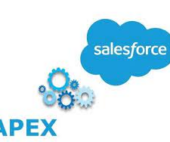Emergence of Large Action Models (LAMs) and Their Impact on AI Agents
Large Action Models (LAMs) have emerged as transformative tools in the AI landscape, designed to bridge the gap between language comprehension and executable actions. While Large Language Models (LLMs) excel at handling unstructured content, LAMs bring specificity and actionability, focusing on structured, executable outcomes.
Advancing Autonomous AI Agents
Autonomous AI agents, powered by LLMs, have become a prominent area of research, driving innovations like agentic applications, retrieval-augmented generation (RAG), and discovery mechanisms. Despite their potential, challenges persist, particularly in creating specialized models for agent-specific tasks.
According to Salesforce AI Research, the open-source community faces hurdles, including a lack of high-quality datasets and standard protocols. Addressing these gaps, Salesforce introduced the xLAM series, purpose-built Large Action Models tailored for AI agent tasks. The xLAM series comprises five models, featuring architectures ranging from dense structures to mixture-of-experts, with parameter sizes starting at 1 billion. These models aim to enhance the operational capabilities of autonomous agents.
Function Calling: Enhancing AI Agent Capabilities
Function calling is central to LAMs, enabling models to extend beyond text generation to perform actionable tasks. This capability allows AI agents to retrieve data, schedule tasks, execute computations, and more. By generating precise parameters, LAMs act as brokers between natural language input and external processes, such as database queries or API interactions.
For example:
- Data retrieval: An AI assistant can access real-time information, such as checking a customer’s delivery status.
- Task execution: Scheduling meetings based on user preferences and calendar availability.
- Dynamic interactions: A math tutor can perform computations in real-time.
- Workflow automation: Transforming raw data into structured formats for storage and analysis.
- UI modifications: Updating interfaces dynamically, like placing a pin on a map.
Function calling allows LAMs to integrate seamlessly with external systems (e.g., CRMs, financial databases, APIs) while maintaining flexibility and precision.
From LLMs to LAMs: Expanding Utility
LLMs are inherently versatile, excelling at tasks requiring unstructured content processing, such as text summarization and open-ended queries. However, their outputs often lack the structure needed for task-specific applications. LAMs address this limitation by generating actionable, structured outputs suited for complex, agentic tasks.
In agentic implementations, LAMs expand the utility of AI systems by acting as the centerpiece for structured, action-oriented tasks, effectively transitioning from reactive responses to proactive interactions.
Example: Implementing Function Calling
The code example demonstrates function calling using OpenAI’s GPT-4-0613 model. Two simple tools—add_numbers and subtract_numbers—are implemented. The model decides when to invoke these functions based on user input, showcasing the interaction between language models and external functions.
Key Concepts in Implementation:
- Model Setup: Define the tools and their functions.
- Schema Definition: Specify the parameters for each function.
- Dynamic Invocation: Allow the model to determine the appropriate function to call based on user input.
This integration illustrates how LAMs can enhance real-world applications by bridging natural language understanding with computational tasks, providing both precision and scalability in digital systems.
The Future of LAMs
The introduction of LAMs marks a significant advancement in AI, focusing on actionable intelligence. By enabling robust, dynamic interactions through function calling and structured output generation, LAMs are set to redefine the capabilities of AI agents across industries.
🔔🔔 Follow us on LinkedIn 🔔🔔













